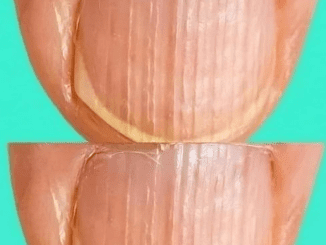Let’s be honest—cleaning air vents is probably one of those tasks that often gets overlooked. I know I forget to clean mine more times than I’d like to admit! But here’s the thing: ignoring those dusty vents can lead to poor air quality and even make your HVAC system work harder. However, what if I told you there’s a super simple trick that takes almost zero effort? It’s a cleaning hack my Nana shared with me, and it has completely changed how I keep my air vents clean.
Why Cleaning Your Air Vents is Essential

Before we get to the easy solution, it’s important to understand why cleaning air vents is crucial. Over time, vents collect dust, pet hair, and other debris, which get blown around your home every time your heating or cooling system kicks in. This circulation of dust particles can lower your indoor air quality, which is particularly bad news for people with allergies or asthma.
Not only that, clogged vents make your HVAC system work harder to maintain temperature, leading to higher energy bills and potential breakdowns. Keeping your vents clean ensures your home’s air stays fresh and reduces the strain on your HVAC system, potentially extending its lifespan.
The Struggle of Traditional Vent Cleaning
We all know the traditional method of cleaning vents—it’s a bit of a pain. First, you unscrew the vent covers, remove them, and wash them with soap and water. Or, you grab your vacuum cleaner’s brush attachment and try to suck up the dust. This process usually involves ladders, awkward reaching, and plenty of frustration, especially if your vents are located in tricky places like the ceiling.
Plus, the mess! Who wants to deal with dust flying around, settling on furniture, and leaving you with even more cleaning to do? Traditional vent cleaning can feel like a chore we all dread.
Nana’s Secret: Dryer Sheets to the Rescue
This is where my Nana’s cleaning trick comes in—and trust me, it’s a game changer. All you need is a simple household item: dryer sheets. Yes, those very same sheets you use to keep your laundry smelling fresh and static-free can work wonders on your air vents.
How to Clean Air Vents Using Dryer Sheets
Step 1: Grab a Dryer Sheet
Any dryer sheet will do the trick, but if you want to add a pleasant fragrance to the air, go with a scented one. They’re soft, lightly textured, and perfect for picking up dust.
Step 2: Wipe Down the Vents
Gently wipe the dryer sheet over the vent’s surface. The sheet will effortlessly grab dust, dirt, and pet hair. The static-reducing properties of dryer sheets help the dust cling to the sheet, so it’s like a magnet for all that grime without needing any water or additional cleaning products.
Step 3: Prevent Future Dust Buildup
This is where the magic happens. Not only does the dryer sheet remove dust, but it also leaves behind a slight anti-static barrier. This prevents dust from clinging to your vents as easily in the future, meaning less frequent cleaning for you!
Step 4: Toss the Dryer Sheet
Once you’ve wiped down all your vents, simply toss the used dryer sheet in the trash. There’s no rinsing, no extra cleanup, and no dust clouds floating around to settle on your furniture. It’s quick, easy, and completely mess-free.
Extra Tips for Even Better Results

While dryer sheets are a fantastic way to clean your vents with minimal effort, here are a few extra tips to ensure your vents stay spotless for longer:
Tip 1: Clean Regularly
Even though dryer sheets help prevent future dust buildup, it’s still a good idea to give your vents a quick wipe every month or so. This will keep your air quality high and reduce the need for deep cleaning later.
Tip 2: Use a Vacuum for Really Dirty Vents
If your vents haven’t been cleaned in a while or are especially dusty, you might want to vacuum them first to remove the bulk of the dust. After vacuuming, finish with a dryer sheet to add that anti-static barrier.
Tip 3: Reach High Vents with a Long-Handled Tool
For ceiling vents or those that are hard to reach, attach a dryer sheet to a long-handled tool, like a broom or Swiffer. Use a rubber band to secure the sheet, and you’ll be able to clean those high-up spots without having to climb a ladder.
The Benefits of Using Dryer Sheets for Vent Cleaning

1. Saves Time and Effort
This method is super fast. You don’t need to take the vents off or bother with soap and water—just wipe, toss, and you’re done.
2. Reduces Physical Strain
No more struggling with vacuum attachments or climbing ladders. This hack requires very little physical effort, making it accessible to just about anyone.
3. Cost-Effective
Dryer sheets are inexpensive, and you likely already have them in your home. You don’t need to buy any special cleaners or tools for this method.
4. Improves Air Quality
By keeping your vents clean, you’re ensuring that your home’s air stays fresh and free of allergens. This is especially important for anyone in your home who may have respiratory issues.
5. Extends the Life of Your HVAC System
Clean vents allow your HVAC system to work more efficiently, reducing the strain on the system and potentially extending its life. This means fewer repairs and lower energy bills.
Conclusion: A Simple Hack for Cleaner Air Vents and Better Air Quality
Who knew that something as simple as a dryer sheet could completely transform how we clean air vents? This hack, passed down from my Nana, is a lifesaver for anyone who dreads the traditional vent-cleaning routine. With just a quick wipe, you can remove dust, improve air quality, and even prevent future buildup—all without breaking a sweat.
So next time you notice your air vents looking a little dusty, don’t reach for the vacuum or soap and water. Instead, grab a dryer sheet and see for yourself how easy it can be to keep your home fresh and clean. Happy cleaning!


